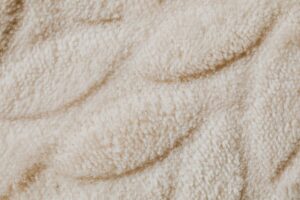Last week, my neighbor asked if he could use lacquer thinner to clean oil off his motorcycle’s brake pads, and I had to stop him before he made a dangerous mistake. I’ve spent years working on vehicles, and I’ve seen firsthand how the wrong cleaning method can ruin brake components or create serious safety hazards. While getting oil off brake pads might seem straightforward, using lacquer thinner could lead to brake failure or worse – but there are several safer solutions worth exploring.
Understanding Brake Pad Contamination

Oil contamination on brake pads is one of the most frustrating issues you’ll encounter when maintaining your vehicle’s braking system.
I’ve seen how brake pad materials, including organic, semi-metallic, and ceramic compounds, can quickly become compromised when exposed to various contaminants. Let me explain the most common contamination sources you need to watch out for.
In my experience, oil can seep onto your brake pads from leaking calipers, deteriorating seals, or during routine maintenance if you’re not careful.
What’s particularly concerning is that even a small amount of oil can severely impact your braking performance by creating a slick barrier between the pad and rotor.
I always remind vehicle owners that brake pad contamination isn’t just an inconvenience – it’s a serious safety issue that requires immediate attention.
The Science Behind Lacquer Thinner
When dealing with contaminated brake pads, lacquer thinner serves as one of the most effective cleaning solutions due to its unique chemical properties.
The lacquer composition typically includes powerful solvents like acetone, toluene, and xylene, which I’ve found incredibly effective at breaking down oil and grease.
I want you to understand that these solvent properties make lacquer thinner particularly good at dissolving both oil-based and synthetic contaminants that can compromise your brakes’ performance.
When I apply it to brake pads, the thinner’s aggressive chemicals quickly penetrate and lift away unwanted substances, leaving a clean surface.
However, I must emphasize that you’ll need to handle this potent chemical with extreme care, using proper ventilation and protective equipment to guarantee your safety.
Risks of Using Lacquer on Brake Pads
Although lacquer thinner effectively removes oil contamination, I need to warn you about several serious risks that come with using this powerful chemical on brake components.
I’ve seen firsthand how lacquer thinner can trigger unwanted chemical reactions with the brake pad material, leading to severe brake pad degradation over time. When you apply lacquer thinner, it can seep deep into the pad’s porous surface and compromise its structural integrity.
I strongly caution you about the potential damage to rubber seals, brake lines, and other sensitive components if the thinner makes contact with them.
There’s also a significant fire hazard since lacquer thinner is highly flammable, especially when working around hot brake components.
Your safety and proper brake function should always come first.
Safe Cleaning Alternatives for Brake Pads

Safe and effective alternatives exist for cleaning contaminated brake pads, including specialized brake cleaners, isopropyl alcohol, and hot soapy water.
I’ve found that eco-friendly cleaners work well too, especially those specifically formulated for automotive use.
When I’m working on brakes, I’ll often use simple DIY solutions that you can make at home. I recommend mixing warm water with a mild dish soap, applying it with a clean cloth, and thoroughly rinsing afterward.
For stubborn oil contamination, I suggest using 90% or higher isopropyl alcohol – it’s both effective and evaporates quickly without leaving residue.
If you’re dealing with heavily contaminated pads, there’s nothing wrong with using a commercial brake cleaner, but make sure you’re in a well-ventilated area and wear protective gloves.
Signs Your Brake Pads Need Replacement
Five key warning signs can alert you to brake pad problems before they become dangerous.
I recommend watching for high-pitched squealing when you brake, which comes from brake noise indicators – small metal tabs that scrape against rotors when pads wear thin.
You’ll also want to check for uneven pad wear patterns, a pulsing brake pedal, or decreased stopping power when you press the pedal.
If your car pulls to one side during braking or you hear grinding metal-on-metal sounds, I strongly advise getting your brakes checked immediately.
I’ve seen how quickly worn pads can damage expensive rotors.
While you can sometimes clean oil-contaminated pads, these warning signs usually mean it’s time for replacement to guarantee your safety.
Professional Brake Cleaning Methods
When brake pads become contaminated with oil or grease, I recommend using professional-grade brake cleaners and specific techniques to restore their function properly.
I’ve learned that proper brake cleaning techniques require the right professional tools and careful attention to safety protocols.
Here are the key steps I follow when performing a professional brake cleaning:
- First, I remove the brake pads completely and inspect them thoroughly, using proper safety equipment like gloves and eye protection.
- Next, I apply specialized brake cleaner in a well-ventilated area, spraying the cleaner evenly across the pad’s surface while avoiding oversaturation.
- Finally, I use compressed air to dry the pads completely, ensuring no cleaning residue remains, and inspect again for any remaining contamination before reinstallation.
Preventing Oil Contamination

Maintaining a clean brake system requires preventive measures that go beyond basic maintenance and cleaning routines. I’ve found that understanding the most common contamination sources and implementing proper oil prevention techniques can save you time and money.
| Prevention Method | Implementation Tips |
|---|---|
| Clean Workspace | Keep floor free of oil spills |
| Proper Storage | Store brake parts in sealed containers |
| Regular Inspection | Check lines and seals weekly |
| Protective Covers | Use brake shields during maintenance |
| Quality Parts | Install OEM-grade seals and fittings |
When you’re working on your brakes, I recommend wearing disposable gloves and using clean tools to avoid transferring oils from your hands. I always keep my brake components separate from other automotive parts, especially those that might have residual oil or grease on them.
When to Replace vs. Clean Brake Pads
Despite your best prevention efforts, brake pads can still become contaminated with oil, leading to the important decision between cleaning and replacement.
Let me help you determine the best course of action based on the brake pad lifespan and cleaning frequency required.
- If your brake pads are relatively new (less than 25% worn) and have minor oil contamination, I recommend attempting to clean them using appropriate solvents and methods.
- When brake pads show moderate wear (25-50% worn) with oil contamination, you’ll need to evaluate the cleaning effectiveness through careful testing before reinstalling.
- For heavily worn brake pads (over 50% worn) or those with severe oil contamination, I strongly advise replacement rather than cleaning to guarantee your safety on the road.
Safety Precautions During Brake Maintenance
Before starting any brake maintenance work, I’ll walk you through the essential safety precautions that’ll protect you from harmful chemicals, sharp objects, and dangerous mechanical parts.
First, make certain you’re working in an area with proper ventilation, as brake dust and cleaning chemicals can be toxic when inhaled.
I always wear protective gear including safety goggles, chemical-resistant gloves, and a respirator mask rated for chemical fumes.
You’ll want to keep a first aid kit nearby and make sure your work area is well-lit and clean.
Never work under a vehicle that’s supported only by a jack – always use jack stands and wheel chocks.
I recommend having a fire extinguisher within reach, since you’re dealing with flammable cleaning materials and brake components that can get hot.







